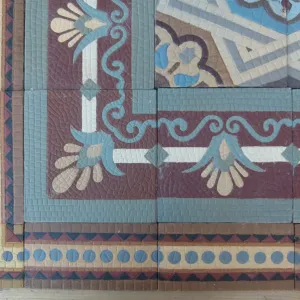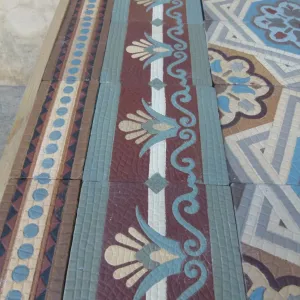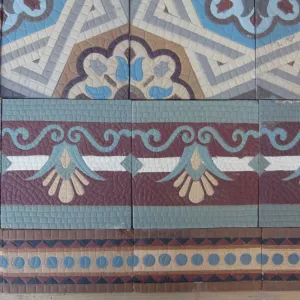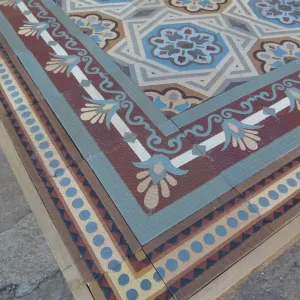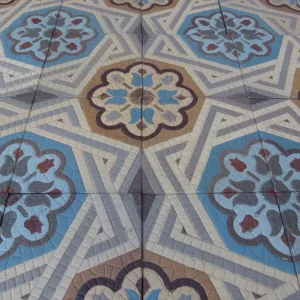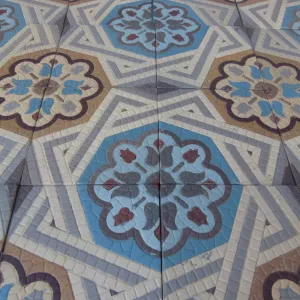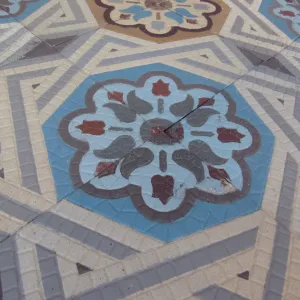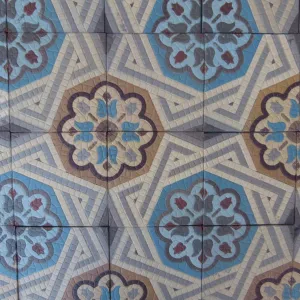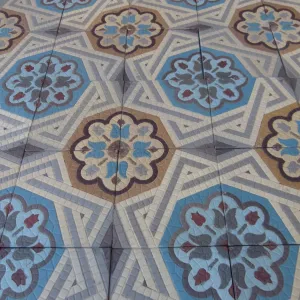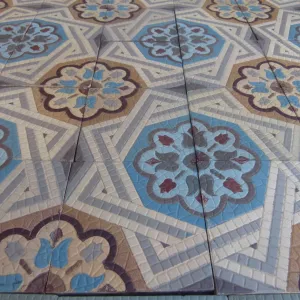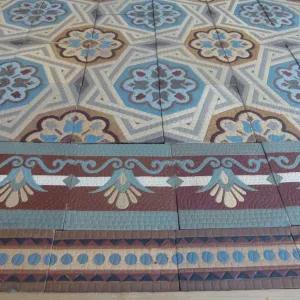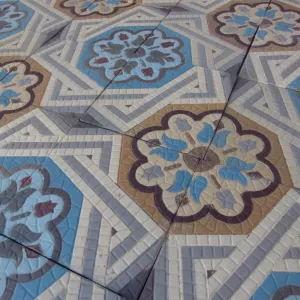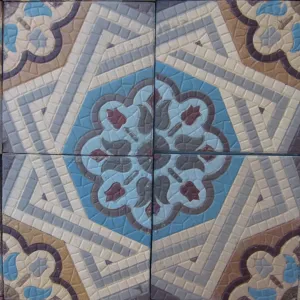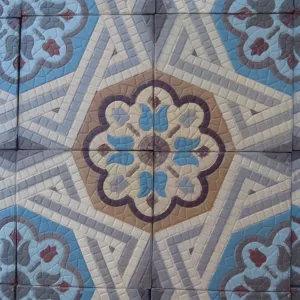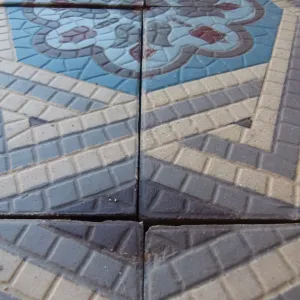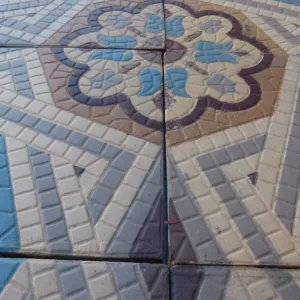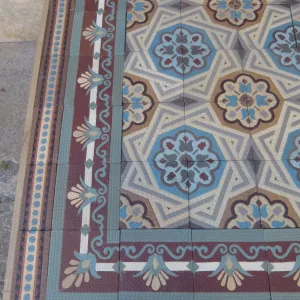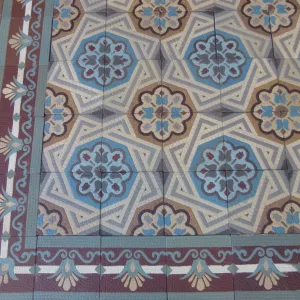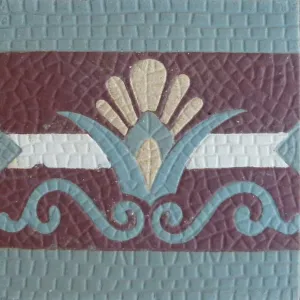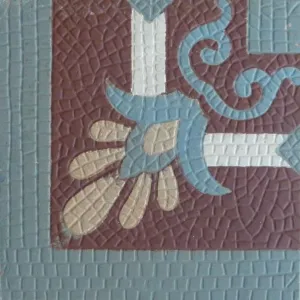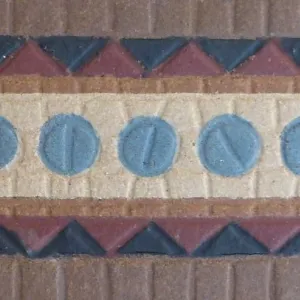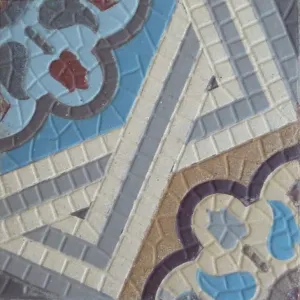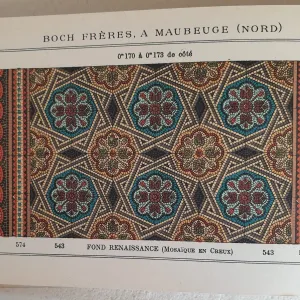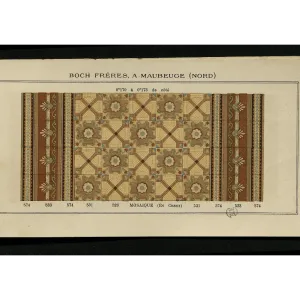A Bold and Ornamental Early 20th-Century Encaustic floor
Crafted in the early 1900s by the distinguished Carrelages Céramiques Boch Frères of Maubeuge, this remarkable encaustic tile floor is a testament to the golden age of French ceramic design. Founded in 1861 by engineer Paul Simons, the Louvroil-based factory quickly became a beacon of innovation and artistry, earning accolades at international exhibitions and contributing to the decorative fabric of civic and domestic architecture across Europe.
This particular floor—measuring approximately 190 square feet—is composed of 6.8-inch square tiles, each meticulously handmade and fired in small batches. The design is a triumph of ornamental geometry: a two-motif lattice interwoven with rhythmic precision, framed by a full-size border and a half-size dotted border that softens the composition with a touch of whimsy. The interplay of symmetry and flourish reflects the influence of both late 19th-century historicism and the emerging Art Nouveau sensibility that Boch Frères helped shape.
Restored with care, the tiles now reveal their original depth of color. Subtle tonal variations—hallmarks of artisanal production—imbue the floor with a sense of movement and individuality. These nuances, far from imperfections, are the very essence of its charm.
This floor is not merely decorative—it is architectural storytelling. It commands attention, anchoring a space with its bold presence and refined detail, it promises to be both a visual centerpiece and a conversation piece.
Inventory Overview:
- Field Tiles: 447 tiles – approx. 143 sq ft
- Large Border Tiles: 83 tiles + 4 corners – 49 linear ft
- Half-Size Border Tiles: 119 tiles + 8 corners – 69 linear ft
Note:-
Our antique tiles were originally handmade in single or two tile molds. Pre-computer fabrication these molds were machined by hand & the colour slips to create the tile were mixed by measure and eye. When firing the tiles, the kiln temperatures of c.1,100F degrees could also be variable. The result of this production process is that tiles made during this period of non-automation often display subtle size & thickness variations and there can be tonal variations in colors, all of which add to their charm and uniqueness. When photographing a floor, we always take a random section so that it is representative of the whole in tones and patina.
A rigorous quality control during the restoration process will include in the sale any tiles with groutable small chips and edge nibbles, expected of tiles more than 100 years old, but include for free any with larger defaults as rejects, which the tiler can then use for offcuts.
Can we help?
If you can provide a technical drawing, or a simple sketch with key dimensions, we are happy to assist in evaluating and recommending the best layout of the floor in your area of choice. Click here for more details
